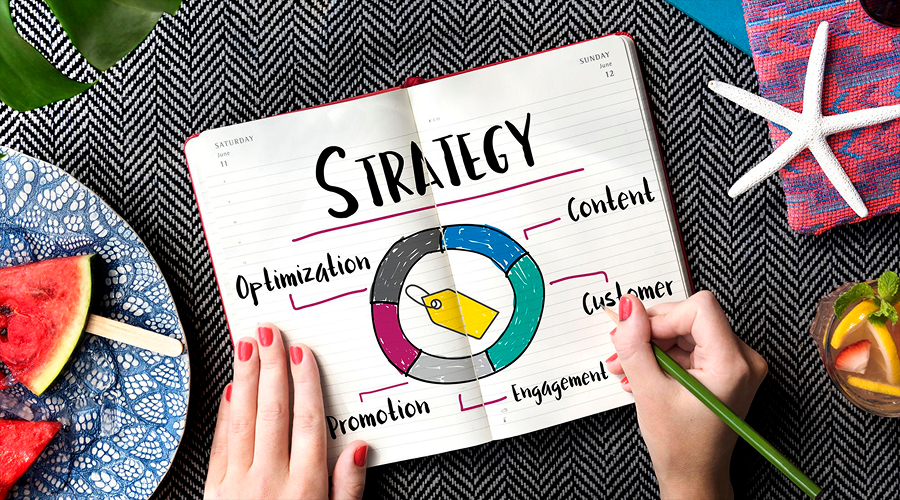
The global e-learning market has exploded, reaching a staggering $250 billion in 2023 – and it shows no signs of slowing down. This rapid growth creates an unprecedented opportunity for educators, entrepreneurs and organizations to build impactful online learning platforms.
Building an e-learning platform is not just about transferring classroom content online. Modern learners expect engaging, interactive experiences that adapt to their needs and learning styles. Your platform needs to deliver:
- Personalized Learning Paths: Smart systems that adjust to each student’s pace
- Interactive Content: Rich multimedia experiences that keep learners engaged
- Seamless Access: Smooth performance across all devices and locations
- Community Features: Tools for collaboration and peer-to-peer learning
➝ The challenges in creating such platforms are significant. You will need to balance:
- Technical performance with user-friendly design
- Scalability with cost-effectiveness
- Content quality with quantity
- Security with accessibility
Yet these challenges bring opportunities. The right e-learning platform can transform how people learn, making education more accessible, engaging and effective than ever before.
This guide walks you through the essential steps to build an e-learning platform that meets modern learner expectations while positioning you for success in this growing market.
Guide to Build a Scalable AI-Powered E-Learning Platform
Step 1: Define Your Engagement Strategy Through Features

User engagement drives the success of your e-learning platform. Research shows that engaged learners are 5x more likely to complete courses and recommend your platform to others.
➝ Create a powerful engagement strategy by implementing these proven features:
1. Live Discussions and Collaborative Tools
- Real-time chat rooms for instant peer support
- Virtual study groups with shared workspaces
- Interactive whiteboards for collaborative problem-solving
- Achievement badges for completing milestones
- Progress bars showing course advancement
- Leaderboards to spark healthy competition
- Points systems tied to learning activities
- Smart content recommendations based on learning patterns
- Adaptive difficulty levels that adjust in real-time
- Custom learning paths generated from performance data
Leading platforms demonstrate the impact of these engagement features. Duolingo saw a 50% increase in daily active users after implementing their gamification system. Coursera reported 32% higher completion rates through AI-personalized learning paths. Udemy attributes their 85% student satisfaction rate to their interactive discussion features.
Your engagement strategy should align with your target audience’s preferences. B2B platforms might focus on professional collaboration tools while consumer-focused platforms can lean into gamification elements.
Step 2: Plan for Scalability and Reliability
Building a robust e-learning platform requires careful consideration of scalability and reliability factors. Your platform needs to handle hundreds or thousands of concurrent users accessing course materials, participating in live sessions and submitting assignments simultaneously.
➝ Key Infrastructure Requirements:
- Load balancing systems to distribute traffic evenly across servers
- Auto-scaling capabilities to adjust resources based on demand
- Content Delivery Networks (CDNs) to serve media files efficiently
- Database optimization for quick data retrieval
- Caching mechanisms to reduce server load
➝ Low-Latency Technologies:
WebRTC technology enables real-time video streaming with minimal delay, essential for live lectures and student-teacher interactions. This peer-to-peer communication protocol reduces server load while maintaining high-quality video transmission.
➝ Traffic Spike Management:
Your platform needs built-in redundancy to handle unexpected user surges:
- Cloud-based elastic infrastructure that scales automatically
- Multiple server regions for geographic distribution
- Queuing systems for resource-intensive tasks
- Regular stress testing to identify bottlenecks
- Backup systems for critical components
➝ Performance Monitoring:
Implement comprehensive monitoring tools to track:
- Server response times
- Resource utilization
- Network performance
- User experience metrics
- System availability
These metrics help identify potential issues before they impact user experience. Regular performance audits ensure your platform maintains optimal speed and reliability as user numbers grow.
Step 3: Design a Smooth & Engaging User Experience

A well-designed user interface is essential for successful e-learning platforms. Your platform’s design should prioritize clarity and simplicity to help learners focus on what matters most – their educational journey.
➝ Key Design Elements:
- Implement a clean, minimalist interface that reduces cognitive load
- Create consistent navigation patterns across all pages
- Use whitespace strategically to improve content readability
- Place important elements like progress trackers and course materials in easily accessible locations
➝ Mobile-First Design Approach:
- Design responsive layouts that adapt seamlessly to different screen sizes
- Optimize touch targets for mobile users
- Ensure text remains readable without zooming
- Test performance across various devices and browsers
➝ WCAG Compliance Guidelines:
- Maintain color contrast ratios of 4.5:1 for normal text
- Add descriptive alt text for all images
- Enable keyboard navigation throughout the platform
- Support screen readers with proper HTML semantic structure
➝ Content Organization:
- Group related information into logical sections
- Use clear headings and subheadings for content hierarchy
- Include visual cues to indicate current location within courses
- Display progress indicators for ongoing activities
Remember to conduct regular usability testing with actual users to identify potential navigation issues and gather feedback for continuous improvement. Your platforms success depends heavily on how effortlessly users can interact with its features and content.
Step 4: Integrate AI for Smarter Learning Experiences
AI technology transforms e-learning platforms from static content delivery systems into dynamic, personalized learning environments. Here’s how you can leverage AI to enhance your platform:
1. Adaptive Learning Algorithms
- Track individual learning patterns and progress
- Adjust content difficulty in real-time
- Identify knowledge gaps automatically
- Recommend targeted learning materials
- Create custom study paths based on performance data
2. AI-Powered Virtual Tutors
- Provide 24/7 instant support for common questions
- Guide learners through complex topics
- Offer explanations in multiple learning styles
- Scale support without increasing staff costs
- Generate practice questions based on weak areas
3. Smart Content Personalization
- Analyze learner engagement metrics
- Customize content presentation methods
- Adjust learning pace automatically
- Match content to preferred learning styles
- Predict potential dropout risks
Research shows AI-enhanced platforms achieve 20-30% higher completion rates compared to traditional e-learning systems. Platforms like Duolingo use AI to adjust lesson difficulty, resulting in 78% increased student engagement.
➝ Implementation Tips:
- Start with basic AI features and scale gradually
- Focus on collecting quality learning data
- Test AI algorithms with small user groups first
- Monitor and refine AI recommendations regularly
- Maintain human oversight of AI systems
Essential Features Every E-Learning Platform Needs
A successful e-learning platform requires specific core features to deliver an effective learning experience. Here’s what you need to include:
1. Multimedia Content Support
- High-quality video streaming capabilities
- Audio lesson integration
- Interactive simulations and scenarios
- Digital whiteboard functionality
- Screen recording and sharing tools
- Real-time collaboration features
2. Robust Content Management System
- Drag-and-drop course builder
- Content version control
- Bulk content upload options
- Resource library management
- Course template creation
- Content scheduling capabilities
3. Assessment and Progress Tracking
- Automated grading systems
- Custom quiz creation tools
- Assignment submission portals
- Progress tracking dashboards
- Performance analytics
- Certification management
4. Security and Compliance
- GDPR-compliant data handling
- FERPA-adherent privacy controls
- Secure authentication methods
- Regular security audits
- Data encryption protocols
- Automated backup systems
Each feature should work seamlessly across desktop and mobile devices. Your platform needs to handle multiple file formats, support real-time interactions and maintain consistent performance under varying user loads. Regular feature updates based on user feedback help maintain platform relevance and effectiveness.
Budget Considerations When Building an E-Learning Platform
Building an e-learning platform requires strategic budget allocation across multiple components. Here’s a detailed breakdown of costs and investment priorities:
➝ Development Cost Ranges:
- Basic Platform (Limited Features): $30,000 – $50,000
- Mid-Range Solution: $50,000 – $150,000
- Enterprise-Level Platform: $150,000 – $500,000
➝ Strategic Budget Distribution:
- Infrastructure & Development: 40%
- UX/UI Design: 20%
- Content Creation: 25%
- Security & Compliance: 15%
Your initial investment should target a specific niche rather than attempting to serve everyone. This focused approach allows you to:
- Minimize development costs
- Create specialized features for your target audience
- Build a strong reputation in your chosen market
- Test and refine your platform with a dedicated user base
➝ Hidden Costs to Consider:
- Server maintenance and scaling
- Regular security updates
- Content updates and creation
- Technical support staff
- Marketing and user acquisition
- Third-party integrations
- Training materials development
You can reduce initial costs by starting with essential features and gradually expanding based on user feedback and market demand. This approach helps maintain financial stability while ensuring your platform meets user needs effectively.
Remember to allocate funds for unexpected technical challenges and market changes. A flexible budget with a 10-15% contingency helps manage unforeseen expenses during development and launch phases.
Additionally, consider the implications of scaling your infrastructure. Whether you choose horizontal scaling or vertical scaling, each has its own cost considerations that should be factored into your budget planning.
Conclusion
Building a successful e-learning platform requires strategic planning, technical expertise and a deep understanding of user needs. The future of online education lies in platforms that seamlessly blend cutting-edge technology with engaging user experiences.
➝ Your e-learning platform can thrive by:
- Embracing AI-driven personalization
- Implementing robust security measures
- Creating intuitive user interfaces
- Maintaining scalable infrastructure
- Prioritizing mobile accessibility
The e-learning landscape evolves rapidly – staying competitive means adapting to emerging technologies and user expectations. Start with a focused niche, build a solid foundation and grow your platform based on user feedback and market demands. Your investment in thoughtful platform development today will shape the educational experiences of tomorrow.






